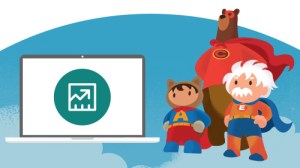The world of B2B sales tends to be complex and slow-moving. Yet, there is an easy way to gain the upper hand – by avoiding common B2B sales mistakes. When we train our sales teams to identify and avoid these pitfalls, we enable them to focus on quality leads and close more deals.
Here are some frequently encountered mistakes in B2B sales:
1. Chasing the wrong leads
Sometimes, sales reps may pursue leads with very low chances of conversion. This is a waste of resources and time that can instead be used to nurture higher quality leads. With proper lead qualification and filtering, you can zero in on the leads with the most potential to convert.
2. Ignoring existing customers
Everyone wants to acquire new customers, and that’s alright. However, it is equally important to pay attention to your existing, loyal customers. Engage with them frequently and meaningfully. Don’t lose clients who are ready for a repeat sale.
3. Not asking the right questions
Pushy sales tactics don’t work anymore. Focus instead on asking the right questions – such as what an ideal solution for the customer would look like, or what challenges the customer has faced in the past while trying a similar product. This can help you identify the customer’s exact pain points and deliver what they need.
4. Missing out on communicating your value proposition
Customers are not just looking for products. They want trustworthy solutions to their existing or future problems. So, mold your pitch accordingly. Help customers understand the value and qualitative benefits that your offerings bring.
5. Not addressing all stakeholders
B2B sales decisions are often influenced by many stakeholders, including the C-suite, finance head, partners, and end-users. A successful sales strategy will recognise the needs of these different stakeholders and identify value propositions that address each one’s challenges and goals.
Want to avoid these common B2B sales mistakes?
Click here to see how Sales Cloud can help you. 
6. Not collaborating with other departments
B2B sales don’t occur in a vacuum. They require communication and collaboration with other departments like marketing, product development, and service. Together, these teams can better understand customer needs, identify gaps in the customer journey, and work towards aligned goals.
7. Overwhelming the customer with information
A sure-fire way of repelling customers is to bombard them with information and marketing campaigns. There is a fine line between keeping your customer informed and spamming them. Be thoughtful about how and when you communicate. Only share information that the customer needs to make a well-thought-out decision.
8. Rushing your prospects
Don’t hesitate to follow up with your prospects. But don’t rush them into making a decision either; you could end up driving them away. Stay empathetic and give them the time they need to decide on their purchases.
9. Limiting sales to a single channel
B2B customers use multiple online and offline channels to start and end a transaction. So, if you’re focusing your sales only on one channel, you’re likely to miss key opportunities. An integrated, omnichannel approach ensures that you’re targeting customers and generating brand awareness across several channels. However, it’s best to focus on only those channels where your target customers have a strong presence.
10. Not measuring your sales processes
Monitoring and measuring key metrics can help you determine if your sales processes are effective. Metrics such as sales cycle length, customer churn, lead-to-sales ratio, etc. help you see how you are performing and what can be improved. They also give you a greater insight into the market and your target audience. However, you need to be wary of tracking an excessive number of factors since that can lead to data overload. It’s critical to identify and efficiently measure only the data that is essential to your sales process.
Give your B2B sales teams the right information and tools to win more deals
To successfully execute the perfect B2B sales strategy , your sales team should learn to recognise these common B2B sales mistakes and how to avoid them. With Salesforce Sales Cloud, they sales reps can easily score and nurture leads, manage prospect and customer interactions, perform follow up actions, and configure deals to meet customer needs – minimising the chances of errors.
Sales Cloud unifies data from multiple sources to create a foolproof 360-degree customer view that enables sales reps to build meaningful, personalised relationships in an informed manner. And it streamlines everyday sales tasks and processes with automated lead management, forecasting tools, automated workflows, etc. Also get insightful analytics to guide your sales strategy, letting you achieve greater sales success in any industry.
Want to avoid these common B2B sales mistakes?
Click here to see how Sales Cloud can help you. 

























